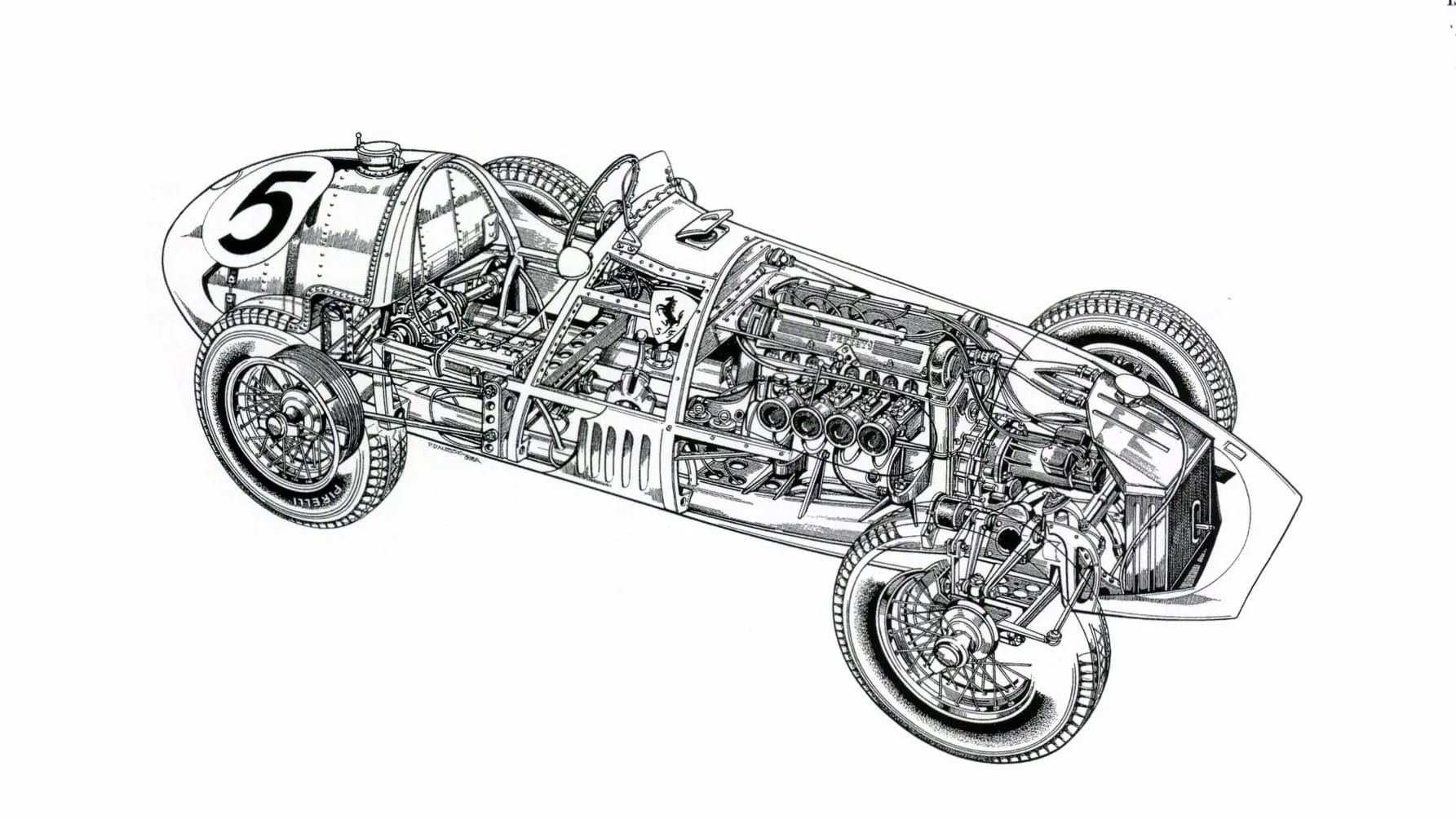Ferrari 500: Light fantastic
Ferrari had burst onto the post-war scene with ambitious V12 designs, but it was the 500's far more mundane approach that elevated it to GP dominance. Paul Fearnley explains

Bernard Cahier/Getty Images
Ferrari’s F1 Finest
1st, Ferrari 500
<< Ferrari 156: Shark strike
>> Ferrari’s F1 finest: the verdict
Ferrari was just over three years old, and yet it had seen off Alfa Romeo and the supercharger (although not beaten them to the world titles), and rewritten Formula Two with its jewel-like V12s. Yet a brave decision to turn its ethos on its head was about to make it even more successful.
The F1 world championship was to be run to a new formula from 1954, and the debate as to what this should be was already raging by the end of 1951. Enzo wanted to nudge the governing body over in the direction of the proposed 2.5-litre route — and had one such prototype four-cylinder model circulating Monza during practice for the 1951 Italian GP.
Pragmatism had overtaken his love of the V12, and Aurelio Lampredi had designed him a strong, compact, frugal, honest-to-goodness, dohc twin-spark four-pot that could easily be converted to 2-litre F2 spec. This would allow Enzo to return to a formula he had been forced to drop as his F1 battle with Alfa had escalated.
This adaptability would play right into Ferrari’s hands. When it became clear that BRM’s V16 was screaming up the wrong tree, GP organisers were allowed to switch to F2 in 1952 to be assured of full grids. This stopgap formula ran for two years and 15 grands prix, of which Ferrari’s 500 won all but the last one.
Lampredi’s design was well-balanced and had excellent brakes — a fact to which Mike Hawthorn could attest, the Englishman rolling his nimble, light Cooper-Bristol at Modena while attempting to replicate a speed he had just achieved in his first test of the 500.
Perhaps more importantly, it was rugged and reliable in an era when the latter plus point was not the given it is today.
Not everybody raved about the car; though: Roy Salvadori reckoned it wasn’t that fast, didn’t handle too well, and lacked feel. But the car he drove was a privateer version and, as good as he was, ‘Salvo’ was no match for Ascari.
The Schumacher of his day, Ascari won 11 world championship GPs from 14 starts in the 500 on his way to back-to-back titles. He and the 500 also won non-championship races at Modena, Syracuse, Pau (twice), Marseille, Monza, Comminges (sharing with André Simon), La Baule and Bordeaux. It wasn’t just Ascari who benefited from this 180bhp machine: Giuseppe Farina (four), Mike Hawthorn (three), and Luigi Villoresi and Piero Taruffi (both two) racked up wins in these two years. As did privateers Rudi Fischer and Louis Rosier (both two), and Jacques Swaters (one). A total of 36. Defeats were big news.
So who was, what was, and where was, the opposition? Maserati’s A6GCM was a match in terms of outright speed on the faster tracks, but it was less reliable and much thirstier, and so spent more time in the pits. But was it any further behind the 500 than are the McLaren and Williams behind the 2002 Ferrari? Probably not. And it would have been a lot closer had Fangio not broken his neck at the start of 1952. Yet even with him back aboard, but for a last-corner tangle between Ascari and a backmarker in the 1953 Italian GP, Ferrari’s across-town rival would have drawn a GP blank in this formula.
Like Schumacher and the 2002, Ascari and the 500 gleefully pummelled the opposition. On the rare occasions he failed (or was away at Indy), Taruffi or Farina stepped into the winner’s circle. Indeed, so good was the 500 that it enabled the talented, but surely still gauche, Hawthorn to beat the adroit Fangio in that memorable dice at Reims in 1953.
The 500: very simple; very, very effective.
Ferrari 500 statistics, 1952-53
• Grands prix entered 15
• Wins 14
• Additional podiums 19
• Pole positions 13
• Fastest laps 13
• Laps led 874

